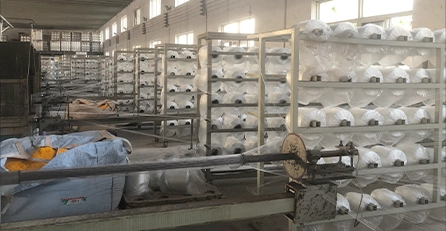Optimal Vacuum Hoses for HVAC Systems and Their Essential Functions
Understanding HVAC Vacuum Hoses Importance and Applications
Heating, Ventilation, and Air Conditioning (HVAC) systems play a vital role in maintaining air quality and comfort in residential and commercial buildings. A critical component of these systems is the vacuum hose, which facilitates the removal of contaminants and ensures the efficient operation of HVAC equipment. In this article, we will explore the significance of HVAC vacuum hoses, their construction, types, and applications.
What is an HVAC Vacuum Hose?
An HVAC vacuum hose is designed to create a vacuum environment necessary for removing moisture, air, and other impurities from refrigerant lines and HVAC components. The vacuum hose is a specialized tube that connects various parts of the HVAC system to a vacuum pump, which helps in pulling out unwanted air and moisture during installation and maintenance processes.
Importance of HVAC Vacuum Hoses
1. Preventing Contamination During the installation or servicing of HVAC systems, moisture and air can enter the refrigerant lines. This contamination can cause inefficiencies, reduced performance, and even damage to the compressor. Using a vacuum hose helps ensure that these contaminants are effectively removed, prolonging the system's lifespan.
2. Enhancing System Efficiency An HVAC system that operates with clean refrigerant lines runs more efficiently. By employing a vacuum hose to evacuate the system before charging it with refrigerant, technicians ensure optimal performance. This ultimately leads to lower energy bills and a more comfortable environment.
3. Safeguarding Equipment Contaminants, such as moisture and air, can lead to issues like acid formation in the refrigerant, which can corrode internal components. By utilizing vacuum hoses during maintenance, HVAC professionals can mitigate the risk of deterioration and extend the longevity of the system.
Construction and Types of Vacuum Hoses
HVAC vacuum hoses are typically constructed from durable materials designed to withstand varying pressures and temperatures. Common materials include rubber, neoprene, and PVC. These hoses are reinforced with layers of fabric or wire to prevent collapsing under vacuum pressure.
There are different types of HVAC vacuum hoses, including
hvac vacuum hoses

- Standard Vacuum Hoses These are commonly used for various HVAC applications. They are typically ¼ inch to ⅜ inch in diameter and are designed for compatibility with standard vacuum pumps and manifold gauges.
- Heavy-Duty Vacuum Hoses Designed for more demanding applications, heavy-duty vacuum hoses can handle higher vacuum levels and greater stresses. They are essential in commercial HVAC settings, where systems are larger and more complex.
- Refrigeration Vacuum Hoses These specialized hoses are compatible with refrigerants and are designed to prevent leakage and ensure effective evacuation of the system. They’re often fitted with specialized fittings that match the requirements of different HVAC systems.
Applications of HVAC Vacuum Hoses
HVAC vacuum hoses find application in various scenarios, including
1. System Installation When installing a new HVAC system, technicians employ vacuum hoses to evacuate the refrigerant lines before charging them with refrigerant. This step is crucial for ensuring that the system operates efficiently from the start.
2. Routine Maintenance Regular maintenance of HVAC systems requires the use of vacuum hoses to remove contaminants. This practice is essential in keeping the system running optimally and mitigating costly repairs.
3. Retrofits and Upgrades When upgrading or retrofitting an existing HVAC system, technicians use vacuum hoses to ensure that the new components work seamlessly with the old ones. This guarantees that there are no issues related to moisture or air contamination.
Conclusion
In conclusion, HVAC vacuum hoses are an indispensable tool in the maintenance and installation of heating and cooling systems. They play a crucial role in preventing contamination, enhancing system efficiency, and safeguarding equipment. By understanding the importance of these hoses and their proper applications, HVAC professionals can ensure that systems operate at peak performance. As technology advances and HVAC systems become more sophisticated, the role of vacuum hoses will continue to be pivotal in the industry, making them a critical component for every HVAC technician and installer.
-
Welded Wire Mesh Panel: Durable, Versatile, and AffordableNewsJul.28,2025
-
Top Quality Oxy Acetylene Hoses for Sale Fit for Welding DemandsNewsJul.28,2025
-
The Future of Pneumatic Air Tubes in IndustryNewsJul.28,2025
-
Superior and Reliable LPG Hose Pipe Solutions for Every NeedNewsJul.28,2025
-
Exceptionally Durable and Versatile Premium Braided PVC TubingNewsJul.28,2025
-
Best Adapters for Connecting Garden Hose to PVC Pipe ConnectionsNewsJul.28,2025














